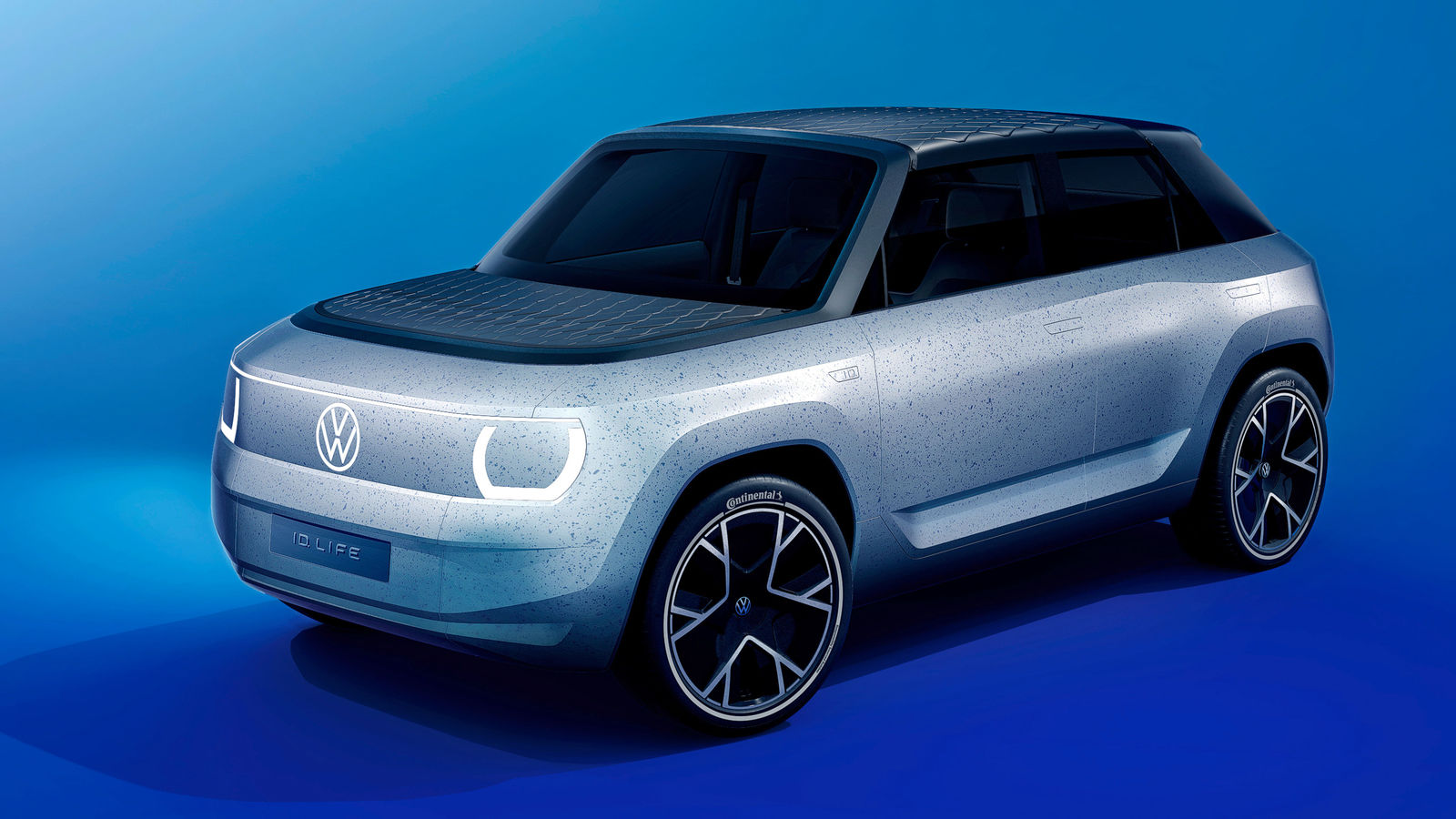Consistent reduction. With its purely electric drive, purist design and the choice of materials used in the exterior and interior, the ID. LIFE represents a holistic sustainability concept. Its body is defined exclusively by the basic shape of a five-door hatchback model. Like the three-way division of body, passenger compartment and roof, the materials of the exterior comprise just three components, which are also clearly distinguished visually. The ID. LIFE deliberately dispenses with add-on parts or any complicated mix of materials – not least in the interests of later recycling.
Resource-saving surface treatment. The clear finish on the bodywork includes the use of recycled wood chips dyed blue, adding a particularly attractive visual facet to the white base colour, along with a bio-based hardener. This reflects the vision of a recyclate for car body construction that has the potential to completely eliminate the need for a paint finish in future vehicles.
Bonnet and roof made of air chamber textile. The air-chamber textile for the bonnet and roof features a distinctive diamond pattern and is made entirely of recycled PET bottles. It can be connected to the body without additional bracing and derives its stability from a fixed air pressure.
Tyres with a significant content of sustainable materials. The tyres for the ID. LIFE are made from, among other things, a blend of sustainably produced and transparently sourced natural rubber, silica from rice husks, vegetable oil, vegetable resins and recycled rubber. This material composition, with a 37 percent share of renewable and recycled raw materials, is specially optimised for rolling resistance (EU label A). In addition, the tyres generate particularly low noise emissions – both factors that contribute to the sustainable character of the ID. LIFE.
FSC-certified wood and recycled PET. The interior of the ID. LIFE does not use any conventionally manufactured plastic. Instead, the focus is on natural and recycled materials. The wooden surrounds for the dash panel, windscreen, rear seat and rear window are made of FSC (Forest Stewardship Council) certified raw material. The ArtVelours Eco used for the seat surfaces and door trim is made of 71 per cent recycled PET bottles and shredded T-shirts. The stitching used in the purple decorative seams consists of 100 per cent recycled PET. Used, shredded tyres serve as the key ingredient for the rubber paint finish that gives the entrance area its distinctive texture.
The ID. LIFE as a flexible energy storage system. The vehicle concept of the ID. LIFE not only includes a variable space concept but also a flexible energy management system. With the models of the ID. family, Volkswagen is also pursuing the vision of integrating the vehicle in the domestic energy cycle as well as the power grid. In the medium term, they will offer the capability for bidirectional charging. This means that not only can the high-voltage battery be charged with energy from the power grid: it can also feed this energy back into the house (vehicle to home) or into the power grid (vehicle to grid) as needed. Based on flexible electricity rates, this technology also offers users the opportunity to reduce their energy costs.
